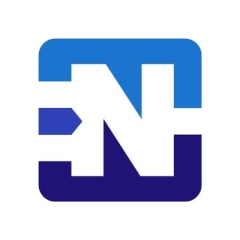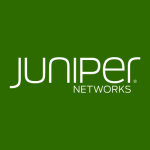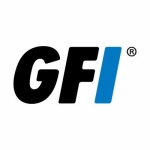What is our primary use case?
I had an appliance that died six months ago. Then I didn't want that hardware anymore, so I bought two new servers. A single power supply but dual on a network with three times four network cards. On that, I installed the pfSense (Community Edition).
From inside to outside, I have about 15 to 20 node servers and users going outside. From outside to inside, I have only three tech support people, myself and two other ones. With regard to clients using the platform from outside to inside, on the servers inside, I have about 1000.
How has it helped my organization?
I had some outages in the network and we provide services for our company. We sell mobile credits. The terminal gets access to our own server inside the network and if one internet fails, then the other one is still up and we have a back-up link on the devices.
If the devices cannot send the first IP address, they make use of the second IP address, which is the back-up link to access the servers. In terms of outages, ever since I used pfSense, I have that feature.
In terms of experiencing delays, the server has the primary IP and the secondary IP configured on the client terminals. The total solution works.
What is most valuable?
I'm still experimenting with some new features. I want to do a high availability configuration. I haven't done that yet, but I'm using OpenVPN, it's very handy.
What needs improvement?
Some suggestions for improvement of pfSense are:
- Adjustment in the interfaces: I had to adjust those interfaces manually and of course that is a great feature that you can restore it but it is immediately also one point for improvement. If you don't have to adjust, if it's just stamped and it works, that's great.
- With regard to the Community Edition, when I installed it, we use Proxmox as an equivalent of PMWorks and I installed the Community Edition in Proxmox. That was very difficult to get to work at first. A lot of tweaking. That is very, very not easy.
- When I'm inside of my network and I go to a URL, the URL points to a server inside my network. It doesn't hang, but I don't get a response. It just stays blank.
- I can imagine that inside my network, I am going outside, and it points to the public address, so I can reach it. With eSoft, without any adjustment, it worked, and I was able to do that. I went to search pfSense for an option, and I had some documents open to read about how it is done, but it isn't clear enough. It's not that easy. I would appreciate it if I could get easy help on that.
For how long have I used the solution?
One to three years.
What do I think about the stability of the solution?
pfSense is very stable. My own disappointment is the appliance only worked for a year and two months. It might be just bad luck, but that was very disappointing.
I had to use pfSense Community Edition on a general desktop. That was done within three hours. It took me three hours just to get the hardware, download the software, and then set it up to get everything working again.
After that, I ordered the new server with two servers: one has to be active and the other standby. I am going to try higher scalability on it using pfSense.
The configuration is already on the servers. I did all this myself because of my experience. The utilization of the CPU, etc., it's very low.
I like pfSense. It doesn't take too many resources and it's very stable.
How are customer service and technical support?
I did not utilize pfSense customer support. You have documentation, there is enough documentation online to get you through. I haven't actually used tech support. When I bought the appliance, I was entitled to one year of tech support. I never used it, it wasn't needed.
Which solution did I use previously and why did I switch?
I previously evaluated eSoft by Untangle. Untangle is an open source company but you have to buy custom add-on's to get it to work. I bought eSoft and it's very good.
I am also the CEO of my company. This technical part, it's not my profession, but I get less and less time to invest, and more time playing around with this stuff.
When we were growing, a small company, eSoft was small, so I needed a bigger one. I had to reset eSoft every week because of the growing traffic over it. I wanted a bigger one and it was not available.
What I wanted to do was not possible with Untangle. Untangle was basic stuff. I bought the pfSense appliance and it's open source, but I support the project.
I bought it and I got disappointed because I again wanted a bigger one. My first choice would be Cisco because of my background but Cisco is expensive.
eSoft was good. Before switching from eSoft to pfSense, Cisco at that time was not an option.
Every software in our company, every desktop, every server, is open source. If it isn't CentOS then it's Red Hat or Ubuntu.
Open source was preferred and pfSense was number one on the list.
How was the initial setup?
Ever since the first time I used it, it's very straightforward, it's very easy.
What about the implementation team?
My strategy was to get it connected to the internet first, then apply some rules for forwarding and VPN.
The first one was very easy to set setup. VPN was not that straightforward but there is enough documentation to get you through it and that helped.
In terms of time, the Community Edition took very long to install but once installed, to configure, it took around 15 to 20 minutes.
I did the setup all by myself. There is documentation online and that is sufficient. It's good enough, very good support in the documents.
What was our ROI?
If you haven't invested a lot of money, you will definitely see the return on investment with pfSense because you hardly spend anything, except for the hardware.
With the appliances, pfSense should look into longevity issues. Your hardware should take, like Cisco's and others, years before they break. In terms of other retailer equipment, it's a safe bet towards pfSense.
That's why I purchased it but I have to look into the high availability. There is documentation of people that I know that are going to get it to work. I'm going to test it because that is our business that we are talking about also.
It should work because of the resale mobile credit for our customers. Another thing I will definitely try is the virtual IP because the virtual IP feature can bridge the two interfaces. The SSL certification is from Google.
That was it for me, I'm 100% happy.
What's my experience with pricing, setup cost, and licensing?
I prefer appliance licensing with pfSense (Community Edition).
- It's free.
- It's very stable.
- It's only on the hardware, it can be very fast.
Choose the appliances because it is nice to have the hardware cut out for it, i.e. the right hardware for the right software.
Which other solutions did I evaluate?
I used to be a Cisco network expert. I used to train people and I've done some Cisco projects myself. I know Cisco by heart but I was less excited about Microsoft, so I went researching for open source solutions and I came across pfSense.
I was able to compare pfSense with Cisco. I used it for a client of mine as well, and it was interesting. After that, I started my own company and I came across pfSense again.
I looked into pfSense. You have OPNsense from the Dutch and then you have pfSense. I've tried both and I like pfSense more.
What other advice do I have?
I definitely plan to increase using pfSense. I am going for a higher capacity. If power fails or one server dies, or one gateway dies, the other servers will take over seamlessly. That's the ultimate for us.
I would definitely rate pfSense an eight and a half out of ten. Definitely eight and a half, not lower, could be a bit higher. Because it's stable, it's good. If the small issues I've mentioned are worked on then I would go to a 10.
Disclosure: My company does not have a business relationship with this vendor other than being a customer.
















Yes you can use Squid and SquidGuard to act as your web/content filter. We have it running and are able to filter out HTTP and HTTPS. As far as App Filtering, you can setup Snort to filter out applications. See Netgate's blog for more information: www.netgate.com